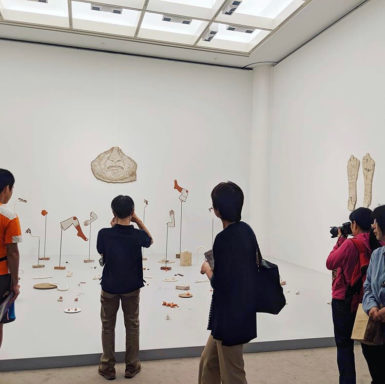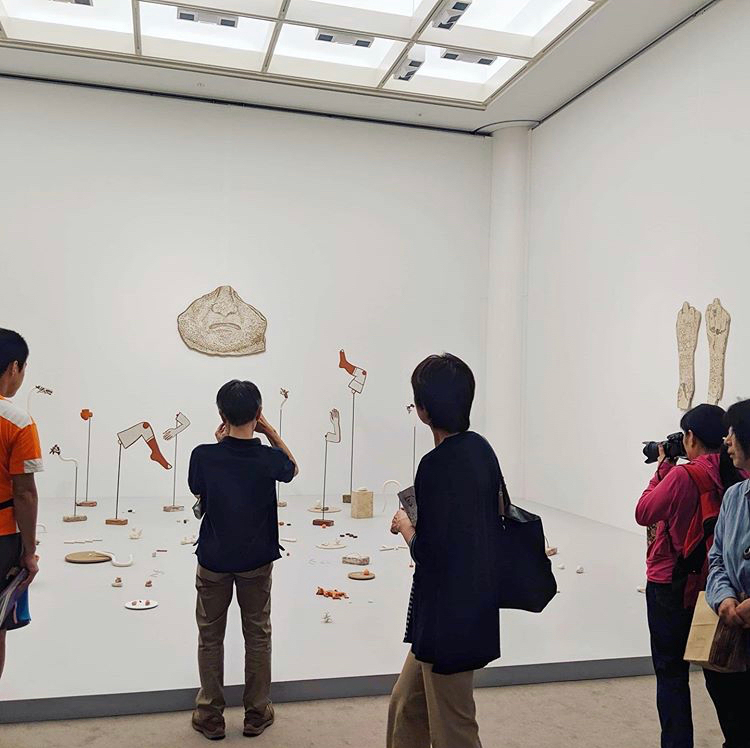[ad_1]

A work by Claudia Martínez Garay is now back on view, after being closed by the artist’s request, at the 2019 Aichi Triennale.
COURTESY AICHI TRIENNALE
A prolonged battle that had at its core allegations of “censorship” has come to an end, at least for now. The organizers of the 2019 Aichi Triennale in Japan have reopened the controversial “After ‘Freedom of Expression?’”—a mini-exhibition within the triennial that looked at the history of censorship of artworks in the triennial’s home country. The organizers also put back on view works by a group of artists who had signed an open letter calling the closure “censorship” and demanding that their works be removed from the exhibition in a stand of solidarity.
The exhibition’s reopening was shared in an Instagram post by artist Claudia Martínez Garay, one of the letter’s signatories.
The decision to close “After ‘Freedom of Expression?’” came days after the Triennale opened in August. The point of contention was a work by Korean artist-duo Kim Seo-kyung and Kim Eun-sung, Statue of a Girl of Peace, which referenced the history of ianfu, or comfort women. The legacy of ianfu—women from throughout Asia, and Korea in particular, who were forced into sexual slavery during World War II by the Imperial Japanese Army—is still contested in Japan. (The Japanese government acknowledged its role in this brutal history in 2015.)
During the exhibition’s first public days, the Triennale was met with severe criticism by a few local government officials and visitors. In an anonymous fax, one person threatened to set fire to the exhibition if it remained on view—which, for some, called to mind a recent devastating blaze that had been stated by a suspected arsonist at the Kyoto Animation studio offices that killed more than 30 people in July.
Fearing for the safety of its staff, the exhibition’s artistic director Daisuke Tsuda, working with the governor of Aichi Prefecture, decided to close the exhibition. Almost immediately, some 70 of the more than 90 artists in the exhibition signed a letter that circulated on Facebook in which they deemed the closure a form of “censorship” and demanded the “After ‘Freedom of Expression?’” portion of the exhibition remain on view that would also ensure visitor and staff safety. The artists also called on the biennial to create a forum for “free and vigorous discussion” about difficult topics such as these.
A week later, with “After ‘Freedom of Expression?’” still shuttered, a group of 10 artists, including Martínez Garay, Tania Bruguera, Javier Téllez, Regina José Galindo, Pia Camil, Minouk Lim, and Park Chan-kyong, issued an open letter demanding the removal of their work as long as “After ‘Freedom of Expression?’” remained closed to the public. In their letter, first published by ARTnews, the artists wrote, “As a cultural institution, it is the Aichi Triennale’s responsibility to stand by the rights of its exhibiting artists and to protect freedom of expression.”
Over the course of the weeks-long conversations with the artists, the Aichi Triennale altered their works on September 26 using a variety of methods, including covering the works or closing the galleries in which they were on view. Each alteration to the works was also accompanied by a statement by the artist.
ARTnews has reached out to the Aichi Triennale and the artists who demanded their works’ removal for comment and will update this post.
[ad_2]
Source link

